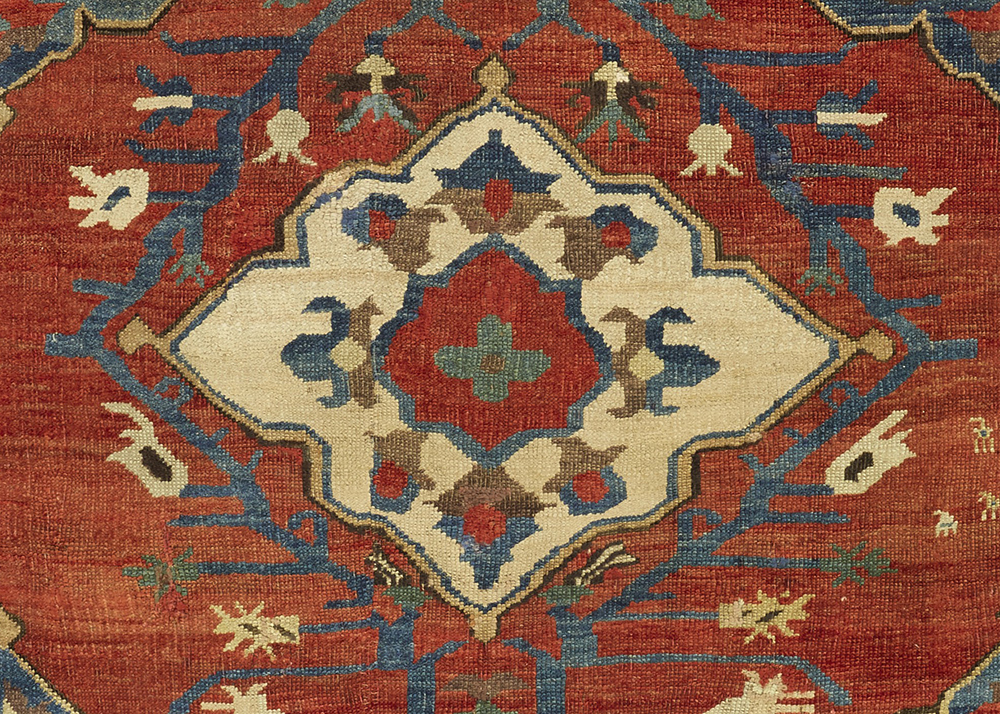Sale Highlights from Sotheby’s Rugs and Carpets
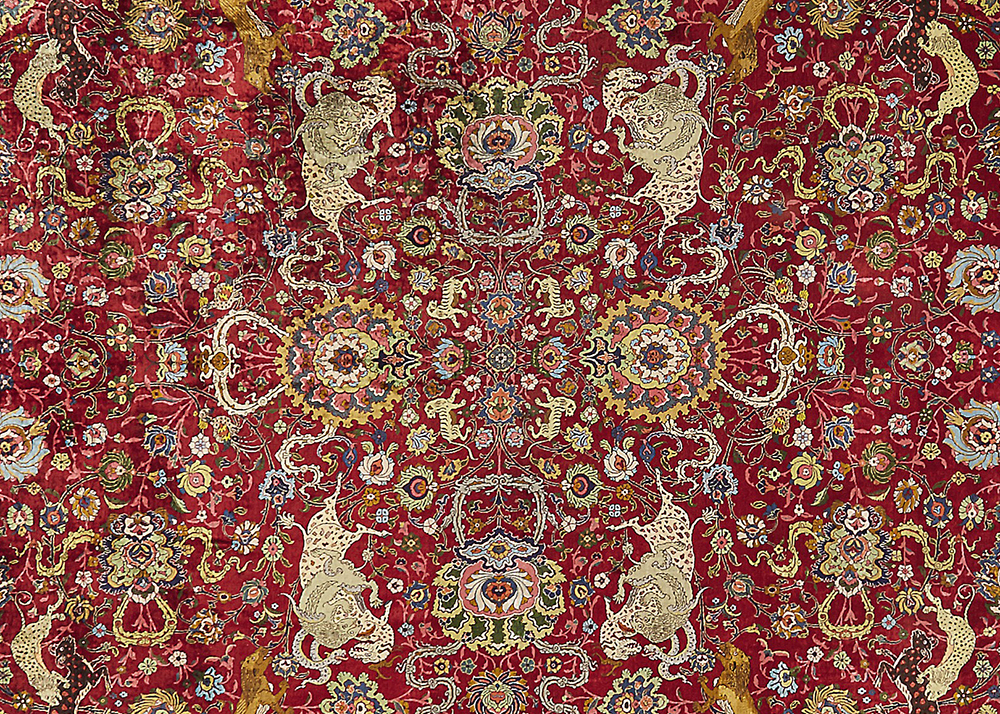
Lot 62, ‘Emperor’ silk carpet (detail), Toussounian, probably Corfu workshop, early 20th century. Estimate: £200,000—300,000. Sold for £393,000 ($551,145)
Sotheby’s 23 April 2018 sale in London of ‘Rugs and Carpets including Distinguished Collections’ yielded more than £1.55 million (almost $2.2 million) with buyer’s premiums, with 72 of 127 lots (66%) sold. Among the ‘distinguished collections’ was the final round of early Turkish village rugs and fragments from the Christopher Alexander Collection, as well as another instalment of the Abdi Roubeni Collection of mainly later Persian urban carpets.
On the day, neither of these named consignments was the source of the top lot. That distinction went to lot 62, a very large, finely-knotted interpretation of the famous Safavid period Emperors’ ‘spiral-vine with animals’ silk carpet pair, now in the MAK, Vienna, and The Met, New York. Consigned by ‘a lady’, attributable to the workshop of the Armenian master-weaver Tossounian in the first third of the 20th century, and quite possibly woven in Corfu, this grand and beautifully-rendered carpet was estimated at £200-300,000 and was bought by the London dealers Arto and Eddie Keshishian for £393,000 ($551,145), a world-record price at auction for one of the ‘Kum Kapı’ genre.
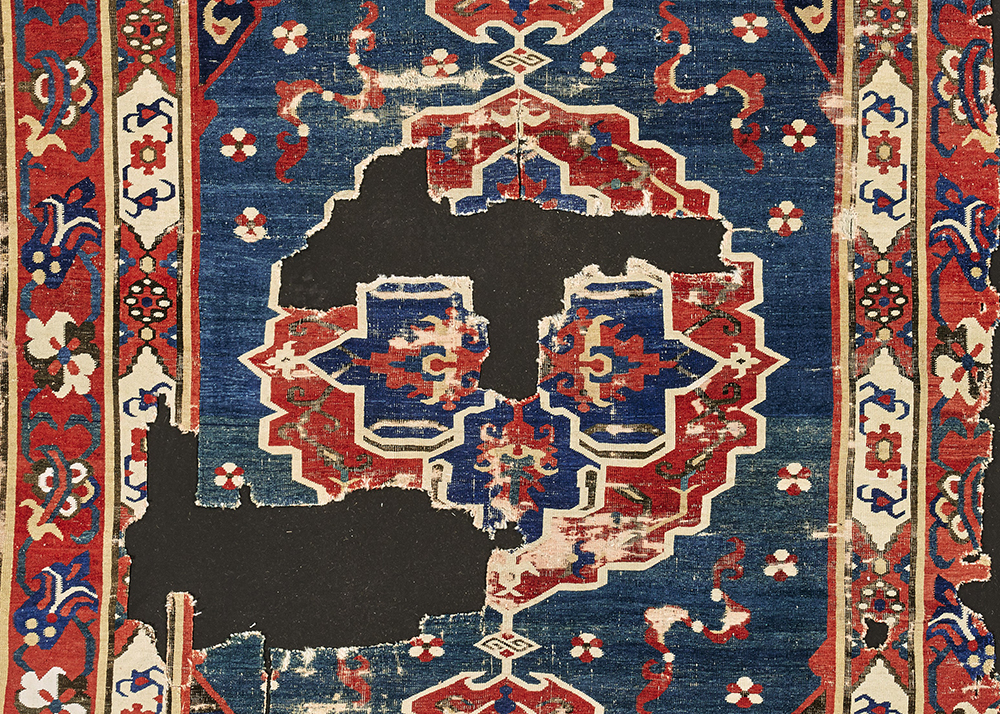
Lot 81, A Karapinar carpet fragment (detail), central Anatolia, Turkey, second half 16th century. Estimate: £40,000—60,000. Sold for £131,250 ($184,065)
Nor indeed did the next best lot, for me the most beautiful and important piece in the sale, come from either Alexander or Roubeni. This was lot 81, the well-known late 16th-century ex-Bernheimer Collection Karapinar medallion carpet fragment (perhaps one third of the original), no stranger to the auction market, having been purchased by the Wher Collection at Christie’s, London on St Valentine’s Day in 1996 for $95,480 (HALI 86, p.131). After radical removal of unsightly old restoration and remounting, it was exhibited during the 2001 HALI Fair, before eventually being resold at a loss for $72,000 at Sotheby’s, London in December 2004 (HALI 139, p.115). This time around it deservedly far exceeded its cautious estimate (£40-60,000), selling to a US private collector on the telephone for £131,250 ($184,065).
Next highest was lot 38, a worn but essentially complete 16th-century eight-lobed Star Ushak carpet, once in the Alexander Collection and perhaps attributable to eastern Anatolia. This saleroom veteran, having failed to sell at Christie’s, London in October 1998 against a £25-30,000 estimate, crossed the Atlantic to Christie’s, New York in April 1999 where it made $32,200 (HALI 105, p.139). Back in London again, estimated at what seemed a perfectly reasonable £10-15,000, it was the subject of prolonged bidding on the phone and over the internet, before going to a phone bidder for £87,500 ($122,710).
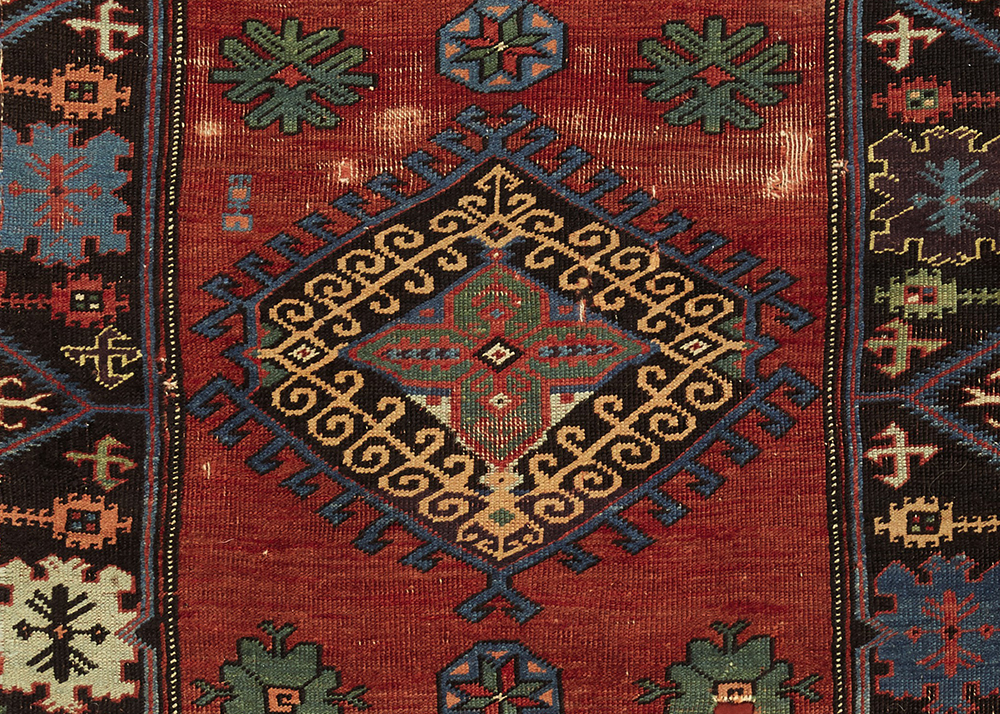
Lot 44, West Anatolian rug fragment (detail), possibly Gördes region, Turkey, 18th century or earlier. Estimate: £8,000-12,000. Sold for £81,250 ($113,945)
The stellar performance and saleroom histrionics of the first tranche of Alexander Collection rugs in November 2017 (HALI 194, pp.134-135) were never likely to be repeated. This time bidding was more considered and less aggressive, with fewer strong underbidders in the room, more internet activity, and at least two significant US private collectors on the phones. The result was that the most expensive Alexander piece was lot 44, a beautifully coloured pre-1800 west Anatolian village carpet fragment, estimated at only £8,000-12,000, which sold on the telephone after lively bidding for £81,250 ($113,945).

Lot 63, Khorasan carpet fragment, northeast Persia, 17th century. Estimate: £7,000-10,000. Sold for £63,750 ($89,405)
The only non-Turkish rug in the Alexander consignment, lot 63, a brilliantly colourful fragment of a 17th-century Khorasan carpet showing both field and border elements, also soared above estimate (£7,000-10,000) to sell, again to a phone bidder, for a commendable £63,750 ($89,405).
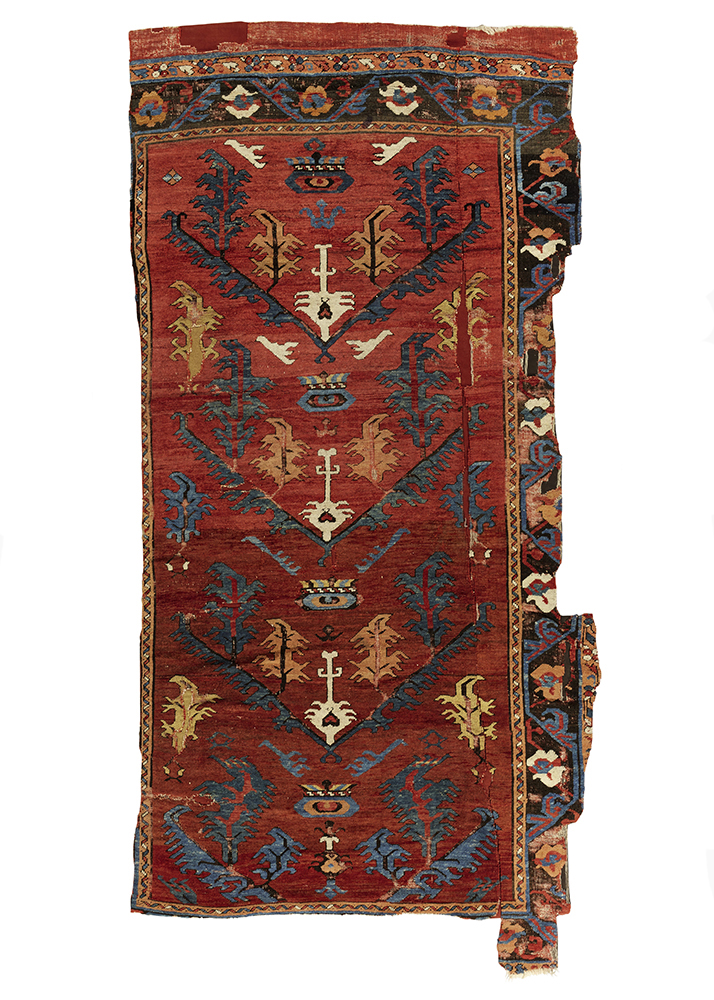
Lot 28, A ‘Karapinar’ rug fragment, south central Anatolia, Turkey, late 17th or early 18th century. Estimate: £50,000-80,000. Sold for £65,000 ($91,155)
Phone bidders also competed successfully for lot 28, a fragmented 17th-century Karapinar rug with an unusual ascending leaf design, which made £65,000 ($91,155), within its £50-80,000 estimate, while Alexander’s classic ‘Kara Memi’ Karapinar medallion carpet fragment, lot 45, also fetched a price within its £40-60,000 range (£57,500/$80,640).


